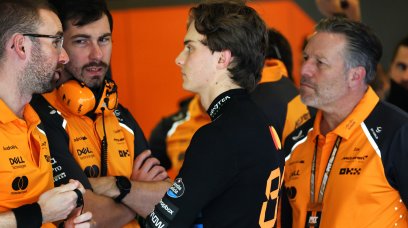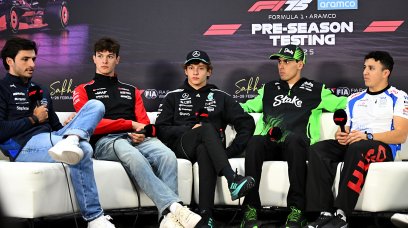If you'd indulge me a little, I'm going to start this defence of the Monaco Grand Prix with a little personal anecdote about the most iconic of Formula 1 races, but it's one that attests to the popularity of the race. My mother is far from a motorsport fan. She is firmly in the 'F1 is motorsport, motorsport is F1' way of thinking and although she knows the big names like Lewis Hamilton, Max Verstappen and Fernando Alonso, she probably couldn't pick out any of the other drivers and dips in and out of watching races. Aside from the British Grand Prix, the one race she is aware of is Monaco, or rather more accurately, "When is the one with the boats?" Monaco is a race that has received a fair bit of criticism down the years – usually because of a lack of overtaking, but is that really all that matters? To make such a claim misses what the very point of the visit to the Principality is all about.
Changing face of street tracks
Monaco is the archetypal street track in Grand Prix racing. Tight, twisty and quite an absurd place in which to hold a round of a worldwide sporting championship on paper. Recent high-speed street tracks such as Jeddah, Baku and the revamped Melbourne have changed the idea of the characteristics of street tracks with flat-out blasts, sweeping corners and slipstreaming as now a part of them as any other traditional circuit on the calendar. As such, can a 'race' which is usually won by whoever gets to Turn 1 first of the two drivers on the front row still have relevance in this fast-paced, dynamic, brave new world of Formula 1? Yes it can, and it does because the Monaco Grand Prix is not about the race on Sunday. The challenge lays elsewhere.
The real Monaco challenge
Every one of the 22 Grands Prix on the 2023 calendar demand something slightly different from the driver, whether it be bravery in high-speed corners, technical nouse to get the car set-up or the ability to conserve the tyres. Monaco's challenge lays within nailing that crucial qualifying lap, the one that can make or break your weekend. It rewards those drivers who look at what the limit is and peer over into the abyss on the other side (usually stacking it in the barrier), and welcome and revel in that challenge. They all know that pushing that little bit harder through the Swimming Pool or taking a wider line through the hairpin could bring those precious thousandths of a second to make the difference between second or sixth on the grid. Those who walk this most finest of tightropes often get the reward. Qualifying in Monte Carlo showcases Grand Prix drivers at their very best and is one thing that separates them from us mere mortals. At circuits with plenty of run-off such as Silverstone or Spa, if a non-motorsport fan stumbles across qualifying, they'll probably say: "Oh, that's easy, I could do that, no problem." You know the type, the guy who usually thinks he could return a serve from Novak Djokovic or last in the boxing ring against Tyson Fury. That hour on usually the final Saturday in May is everything F1 claims to be: thrilling, dangerous, risky and unmissable. It simply tests another aspect of the skill of Grand Prix drivers, and if these 20 are the best drivers in the world, shouldn't their one-lap qualifying pace be put front and centre at one race? Anyway, recent Monaco Grands Prix have been deemed exciting yet featured no overtaking. Carlos Sainz was never going to overtake Sergio Perez in 2022, nor was Max Verstappen on Lewis Hamilton back in 2019. And what about Daniel Ricciardo's win in 2018? On what other track could he showcase his ability to nurse a badly hobbled car home in the lead? Does Monaco still deserve a spot on the F1 calendar? Let us know your thoughts in the poll below and in the comments section!
Most read







